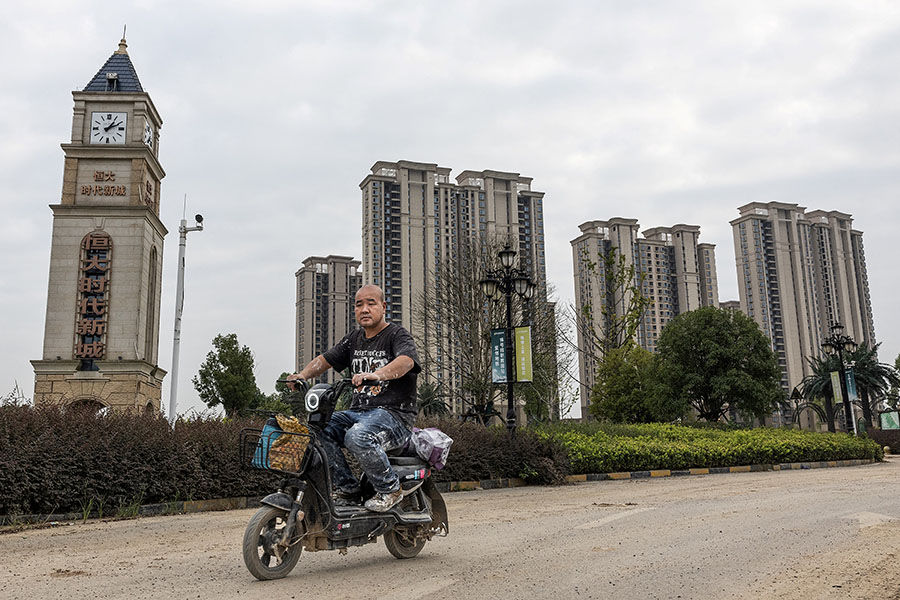
Deflation woes: Can China avoid Japanification?
What the world's second-largest economy could do to stop its spiral into economic stagnation
 A man rides a scooter past a housing complex by Chinese property developer Evergrande in Wuhan, in China's central Hubei province on September 28, 2023. Beijing has recently taken some steps, like cutting mortgage rates, to this effect. But this does little to correct house prices or correct imbalances in the economy. Image AFP / China OUT
A man rides a scooter past a housing complex by Chinese property developer Evergrande in Wuhan, in China's central Hubei province on September 28, 2023. Beijing has recently taken some steps, like cutting mortgage rates, to this effect. But this does little to correct house prices or correct imbalances in the economy. Image AFP / China OUT
As growth decelerates in China and the economy slips into deflation, there are fears that the country may be heading towards a situation reminiscent of Japan in the early 1990s, a quagmire that could take decades to shake off.
The question on everyone’s minds is whether Beijing will make the necessary tough calls to ease the Chinese economy through this critical phase. Or will fear of political instability and social unrest make its leadership turn the other way?
Eerie similarities
China in many aspects resembles Japan at the end of the latter’s “bubble economy”. In the late 1980s, Japan experienced a monstrous stock and real estate bubble. When the froth faded, it led to a nation of struggling banks and an overhang of debt. The economic malaise coincided with an ageing population and declining fertility rates, with no counterbalancing immigration. Meanwhile, trade tensions between Japan and the United States culminated in the Plaza Accord that weakened the dollar against the yen in a bid to correct trade imbalances. Japan’s exports became expensive and shrank.The result of all this was a deflationary trap in which inflation remained below target for two decades, and eventually became negative. The values of houses, stocks and other assets fell year after year. Expecting prices to decline, consumers and firms postponed purchases. Only the post-Covid recovery and a spike in inflation worldwide since last year finally pulled Japan out of this trap.
China has many of the same characteristics. Demographics have turned adverse, the dependency ratio is rising, and the population is set to shrink. Not only does China have no immigration to cushion the decline, its fertility rate of 1.09 is lower than Japan’s in 1990. And trade tensions with the US are at their highest ever.
[This article is republished courtesy of INSEAD Knowledge, the portal to the latest business insights and views of The Business School of the World. Copyright INSEAD 2024]







